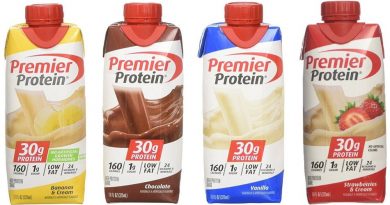Milk Protein vs. Whey Protein – What’s the Difference?
Navigating the world of protein supplements can feel like a full-time job, especially when you’re trying to maximize your hard work in the gym. As a certified strength coach and sports nutritionist, I’ve spent my career helping people decode these choices. You want to know which protein will give you the best results, and the debate between milk protein vs. whey protein is always at the top of the list.
The global protein supplements market is valued at over $27 billion in 2025 and is projected to keep growing, showing just how many people are invested in their performance and recovery. This guide will break down the key differences between these two powerful options, giving you the clarity to choose the right one for your specific fitness goals.
Related Article: How Much Protein Do You Need if You Exercise Regularly?
Disclaimer: This article is for informational purposes only and is not meant to treat or diagnose any condition. It is recommended that you speak with your doctor before starting any exercise program, changing your daily nutrition, or adding any supplements to your regimen.
Table of contents
- What is Milk Protein?
- What is Casein Protein?
- When to Use a Casein Protein?
- What is Whey Protein?
- When to Use a Whey Protein Supplement?
- What Are the Types of Whey Protein?
- What Are the Similarities Between Milk Protein vs. Whey Protein?
- How to Choose Between Casein Protein and Whey Protein
- Why Not Combine Milk Protein and Others into a Blend?
- Milk Protein FAQs
Key Takeaways:
- Milk protein is composed of about 80% casein and 20% whey, offering both slow and fast-digesting properties.
- Whey protein is absorbed quickly (around 10g per hour), making it ideal for post-workout recovery to rapidly start muscle repair.
- Casein protein digests slowly (around 6g per hour), providing a steady release of amino acids for several hours, which is perfect for before bed to prevent muscle breakdown.
- Whey protein has a higher concentration of the amino acid leucine, which is a key trigger for muscle protein synthesis.
- Choosing between them depends on your goal: whey for fast recovery after a workout, and casein for sustained muscle support and satiety, especially overnight.
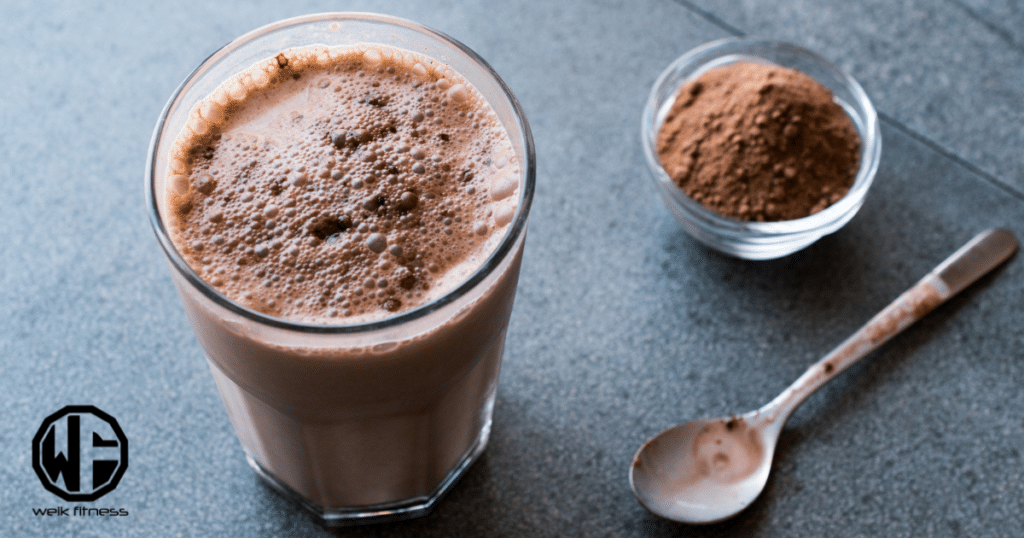
What is Milk Protein?
Milk protein is exactly what it sounds like, the protein naturally found in milk. It’s composed of two distinct types: casein and whey protein. Casein makes up about 80% of the protein content, while whey accounts for the remaining 20%. Both are complete proteins, meaning they contain all nine essential amino acids necessary for muscle growth and repair.
Because casein is the dominant component, the term “milk protein” is often used to refer to casein or milk protein concentrate, which maintains that natural 80/20 ratio. This combination gives you the benefits of both a slow-digesting protein (casein) and a fast-digesting one (whey).
What is Casein Protein?
Casein is the solid part of milk that separates during the cheesemaking process, often called the “curds.” The most common form in supplements is micellar casein, which is created through a filtration process that preserves the protein’s natural structure. This structure is key to its most famous characteristic: slow digestion.
When you consume casein protein, it forms a gel-like substance in your stomach. This significantly slows down the digestion process, allowing for a gradual and sustained release of amino acids into your bloodstream for up to seven hours. This makes it a fantastic tool for keeping your muscles fed and preventing breakdown during long periods without food, like overnight sleep.

When to Use a Casein Protein?
Casein protein is more than just a slow-release supplement; its unique properties offer several distinct advantages for fitness enthusiasts.
1. Boosts Muscle Growth
Casein’s primary benefit is its anti-catabolic effect, meaning it excels at preventing muscle breakdown. By providing a steady stream of amino acids over many hours, it ensures your muscles have the building blocks they need for recovery, especially overnight. A 2020 review in the journal *Physical Activity and Nutrition* highlighted that consuming 40-48 grams of casein about 30 minutes before sleep can significantly improve muscle recovery and protein synthesis.
2. Improved Physical Performance
That sustained recovery translates directly to better performance. When your muscles repair more effectively overnight, you experience less soreness and are better prepared for your next training session. One study found that soccer players who consumed 40g of casein after an evening match had better jump performance and less muscle soreness 12 and 36 hours later compared to a placebo group.
3. Burn Fat and Lose Weight
Because casein digests so slowly, it is incredibly satiating. This feeling of fullness can be a powerful tool for weight management, helping to curb cravings and prevent overeating between meals or late at night. Some research also suggests that pre-sleep casein may even increase fat metabolism the following day, helping you burn more fat while preserving lean muscle mass.
4. Boosts Immunity
Beyond muscle, some of the bioactive compounds found in milk protein have been shown to support the immune system. Certain peptides derived from casein have demonstrated immune-modulating and anti-viral properties in studies, adding another layer of benefit to this versatile protein.
What is Whey Protein?
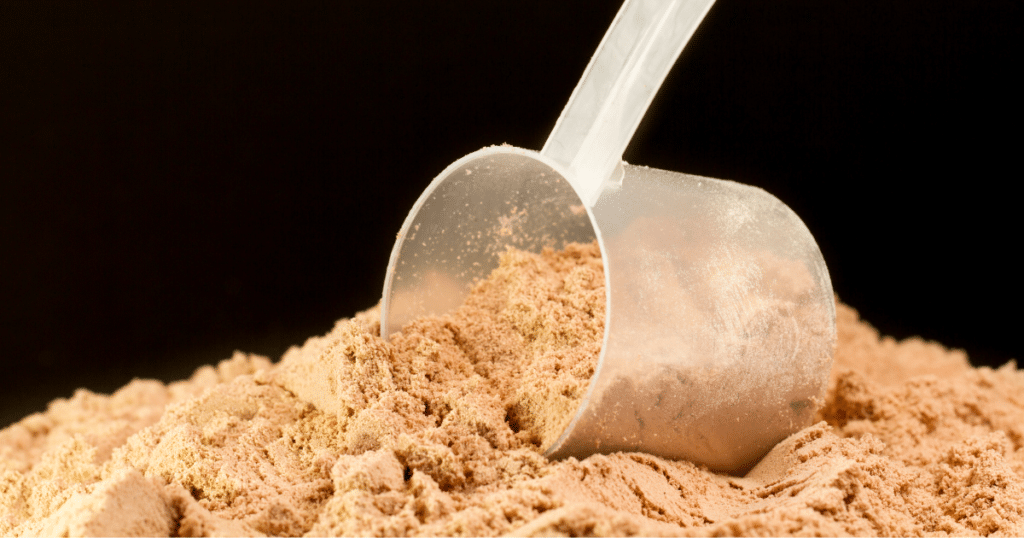
Whey is the liquid portion of milk that gets separated from the curds during cheesemaking. This liquid is then filtered and dried into the powder we recognize as whey protein. Its main claim to fame is its rapid digestion and absorption rate, which is about 10 grams per hour. A standard 30-gram whey shake can be fully absorbed in about three hours, delivering amino acids to your muscles quickly.
Crucially, whey protein has a higher concentration of leucine compared to casein. Leucine is a branched-chain amino acid (BCAA) that acts as a primary trigger for muscle protein synthesis (MPS), the process of building new muscle. This powerful combination of speed and leucine content makes whey the go-to choice for post-workout recovery.
When to Use a Whey Protein Supplement?
Whey protein’s fast-acting nature makes it ideal for specific timing around your workouts to maximize results.
1. Fast Recovery
The “anabolic window” after a workout is when your muscles are most receptive to nutrients. Because whey is absorbed so quickly, it delivers amino acids to your muscles right when they need them most. This kickstarts the repair and rebuilding process, helping reduce muscle soreness and improve recovery time. It’s the perfect choice for your post-workout shake.
2. Weight Loss
While casein is a long-term hunger suppressant, whey protein can also aid in weight loss. A quick whey shake can increase feelings of fullness and satiety, helping you manage your appetite and reduce overall calorie intake throughout the day. This makes it a great option for a low-calorie, high-protein snack between meals.
3. Muscle Protein Synthesis
Thanks to its high leucine content, whey is a powerful stimulator of muscle protein synthesis. Consuming whey, especially after resistance training, provides the direct signal your body needs to start building new muscle tissue. This makes it superior to many other protein sources for maximizing muscle growth in response to exercise.
What Are the Types of Whey Protein?
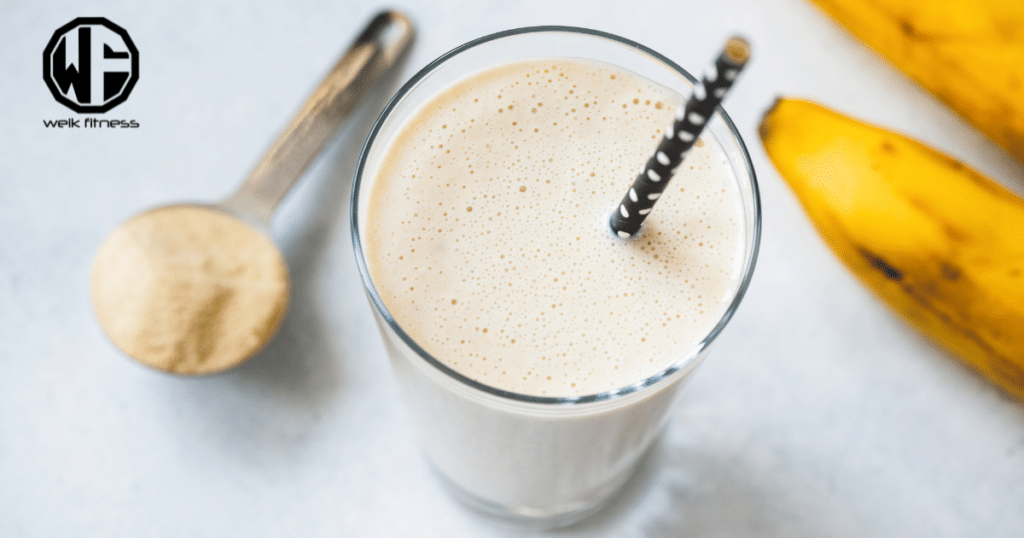
When you shop for whey, you’ll see three main types. The difference comes down to the level of processing, which affects the protein, lactose, and fat content.
1. Whey Protein Concentrate
Whey Protein Concentrate (WPC) is the least filtered form. It typically contains 70-80% protein, with the rest being lactose (milk sugar) and fat. While it has a slightly higher calorie count, many people prefer its creamy taste. It’s a great, cost-effective option if you don’t have issues with lactose.
2. Whey Protein Isolate
Whey Protein Isolate (WPI) undergoes additional processing, like cross-flow microfiltration, to remove most of the lactose and fat. The result is a powder that is 90% or more protein by weight. This makes it a fantastic choice for people with lactose sensitivity or those on a strict low-carb or low-fat diet.
3. Whey Protein Hydrolysate
Whey Protein Hydrolysate (WPH) is often called “pre-digested.” It has been treated with enzymes to break down the protein into smaller peptides, allowing for the fastest possible absorption. While it’s the most expensive option, it’s the easiest on the digestive system and is often used in medical nutrition and infant formulas.
What Are the Similarities Between Milk Protein vs. Whey Protein?
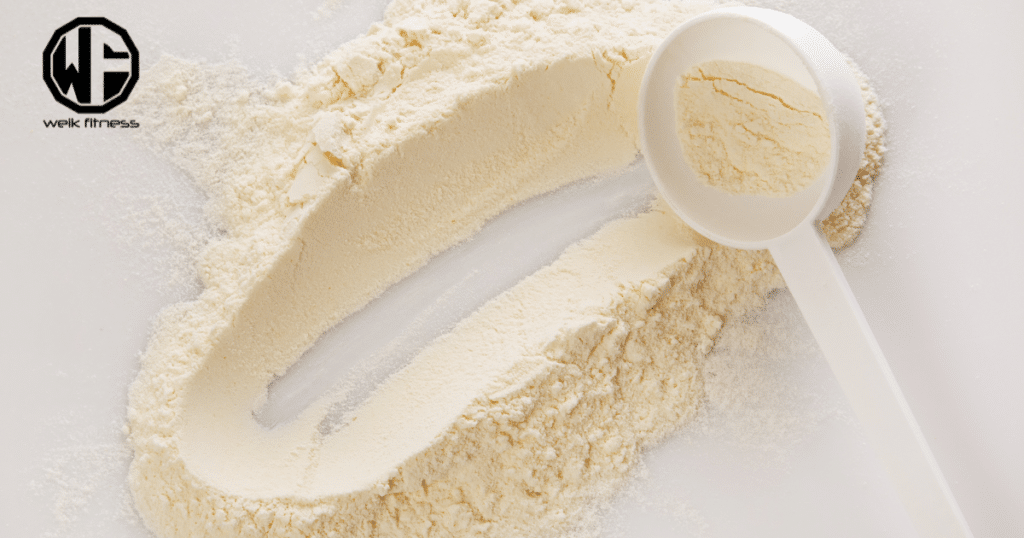
Since whey is a component of milk protein, they share a common foundation. Here’s what they have in common:
- Complete Proteins: Both provide all nine essential amino acids your body can’t produce on its own, which are critical for muscle repair.
- Dairy Origin: Both are high-quality proteins derived from milk, typically as a byproduct of the cheesemaking industry.
- Muscle Support: Both are scientifically proven to aid in building muscle mass, preserving lean tissue, and improving recovery from exercise.
- Performance Enhancement: Consistent use of either protein can lead to improvements in strength and overall physical performance.
How to Choose Between Casein Protein and Whey Protein
Deciding between casein and whey ultimately comes down to your primary goal and, most importantly, timing. Both are excellent, but they shine in different scenarios.
Strength and Muscle
For immediate muscle-building stimulus after a workout, whey is the winner. Its high leucine content and rapid absorption rate provide the strong, fast signal your muscles need to start protein synthesis. A study cited in the journal *Metabolism* found that while both proteins lead to muscle anabolism, whey creates a faster and higher initial peak in amino acid levels.
Weight Loss and Lean Muscle Mass
For satiety and muscle preservation during a diet, casein has the edge. Its slow digestion helps you feel full for longer, making it easier to stick to a calorie deficit. This makes it an ideal choice for a bedtime snack or a meal replacement to keep hunger at bay while ensuring your muscles are protected from breakdown.
Absorption Rates
This is the most critical difference. As a study in the *Proceedings of the National Academy of Sciences* first showed, whey causes a rapid but transient spike in amino acids, while casein leads to a slower, more prolonged release. Think of it this way: whey is a sprint, and casein is a marathon.
| Feature | Whey Protein | Casein Protein |
|---|---|---|
| Digestion Speed | Fast (~10g/hour) | Slow (~6g/hour) |
| Best Use | Post-Workout Recovery | Before Bed, Between Meals |
| Primary Benefit | Spikes Muscle Protein Synthesis | Prevents Muscle Breakdown |
| Leucine Content | Higher | Lower |
Usage
The best strategy often involves using both. Use whey protein within 30-60 minutes after your workout to capitalize on its fast absorption for recovery. Use casein protein before bed to drip-feed your muscles with amino acids overnight, promoting recovery and preventing catabolism while you sleep.
Cost Comparison of Whey Protein and Casein Protein
Generally, whey protein concentrate is the most affordable option. Casein protein is often slightly more expensive than WPC. Whey protein isolate and hydrolysate are the most expensive due to the extra processing required to increase purity and absorption speed. Brand reputation also plays a role, with well-known brands like Optimum Nutrition or Dymatize often priced higher but also carrying certifications like NSF Certified for Sport, which guarantees quality and purity.
Why Not Combine Milk Protein and Others into a Blend?
That is an excellent question, and many brands have already created protein blends for this very reason. A blended protein, which might contain whey, casein, and sometimes even egg or soy protein, gives you the best of both worlds.
Research from institutions like Baylor University and the University of Texas Medical Branch has shown that a whey and casein blend can promote greater increases in lean muscle mass compared to whey alone. The whey provides the initial rapid spike in protein synthesis, while the casein takes over later, sustaining the anabolic response for hours. This makes a blend a highly effective and versatile option for a post-workout shake or a general-purpose protein supplement.
Ultimately, both whey and casein are top-tier protein sources. Whey is your fast-acting recovery specialist, while casein is your long-duration muscle protector. By understanding their unique strengths, you can use one or both to build a smart supplement strategy that delivers fantastic results.
Milk Protein FAQs
Can I use milk instead of a protein shake?
Yes, milk is an excellent recovery drink because it naturally contains both whey and casein, along with carbohydrates. However, you would need to drink a large volume of milk to equal the protein in one scoop of powder. A scoop of whey typically has 25 grams of protein, while a full liter of milk is needed to get a similar amount.
Are there any side effects to milk protein or whey protein?
The primary side effect for some people is digestive distress due to lactose. If you are lactose intolerant, whey protein isolate is a better choice as it contains very little lactose. Those with a true milk allergy should avoid both.
How can I be sure my protein powder is high quality?
Look for third-party certifications on the label. Seals from organizations like NSF Certified for Sport or Informed-Choice guarantee that the product has been tested for banned substances and that what’s on the label is actually in the container. This is a critical step for competitive athletes.
Is whey protein or casein protein better for baking?
Whey protein isolate tends to be better for cooking and baking as it has a more neutral taste and is more heat-stable. Casein’s tendency to form a gel can result in a thick, dense texture, which makes it great for making protein “pudding” but less ideal for baked goods.


*Disclosure: This article may contain affiliate links or ads, which means we earn a small commission at no extra cost to you if you make a purchase through these links. These commissions help support the operation and maintenance of our website, allowing us to continue producing free valuable content. Your support is genuinely appreciated, whether you choose to use our links or not. Thank you for being a part of our community and enjoying our content.
PLEASE CONSIDER SHARING THIS ON YOUR SOCIAL MEDIA TO HELP OTHERS LEARN MORE ABOUT THIS TOPIC.





